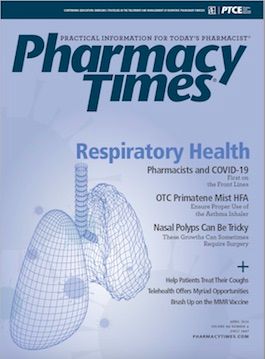Stark Law Aims to Prevent Financial Gain From Self-Referrals
The 1989 act has significance for pharmacists because of their relationships with physicians.
The ethics in patient referrals act, enacted in 1989, is also known as the Stark Law. It is named after former Rep Fortney “Pete” Stark (D-CA), who was the sponsor of the law in Congress.1
The goal of the Stark Law was to prevent physicians from self-referring patients for their own financial gain. To achieve this, the law prohibits health care providers from referring patients to designated health services entities if they have either a direct or indirect financial relationship with the entity.2 Although the scope of this statute was originally limited to clinical laboratory services, amendments made in 1993 expanded the services to which it could be applied. The amended version of the Stark Law, known as Stark II, identified 11 services to be classified as designated health services falling under the “self-referral” prohibition in 42 Code of Federal Regulations §411.351.
Intent is not a factor in the Stark Law. For example, many nurse practitioners (NPs) violate the law unknowingly. In these cases, NPs employed by hospitals are caring for patients under the supervision of private physicians who are not employed by the hospital. Sometimes the physicians bill for services that the NPs provide. This can constitute violations of Medicare rules and the Stark Law because it is interpreted as the hospital offering nonmonetary compensation to the physicians who are not employed by the hospital.3 Most NPs in similar situations do not realize the potential legal consequences. This shows why health care practitioners should understand the governing regulations and statutes.
The Stark Law applies to all relationships that physicians have with designated health services entities, and pharmacies are classified as such. Because of this, referral relationships between physicians and pharmacists can be scrutinized through the lens of the Stark Law. If referring patients to a particular pharmacy results in financial gain for the physician, it could violate the law, unless an exception applies. Two of the main exceptions to this law are “the non-cash/non-cash equivalent expenditure exception, and the personal services exception.”4
Under the noncash/noncash-equivalent expenditure exception, referring physicians can accept up to $380 per year of noncash items, such as entertainment and meals, from a designated health services entity. In addition, designated health entities are permitted to pay referring physicians for legitimate services, such as renting a space for the physician’s office.4
If an exception does not apply and a pharmacy pays a referring physician, the action can be classified as a Stark Law violation and have severe ramifications. Pfizer, for instance, was prosecuted for violating the Anti-Kickback Statute and the Stark Law. Pfizer paid a $2.3 billion settlement in 2009 after it was found that the company had been offering incentives so physicians would be more likely to prescribe a drug that the FDA had not approved for that purpose.5
COMING CHANGES
The ever-changing nature of the health care industry can complicate the applicability of legislation. The Stark Law is a prominent example of this reality. After the Affordable Care Act was passed, a shift in the health care industry occurred to focus more on patient outcomes and the performance of the health care system. As a result, Medicare reimbursement became, in part, dependent on whether an organization met value-based purchasing goals. Health care organizations wanted to offer incentives to providers that are related to improving the quality of care. However, this method of compensation differs from the way Medicare pays for particular services because the program determines how much it will pay based on relative value units. Although organizations are seeking to establish incentive payment programs, they must proceed with caution because such programs could violate the Stark Law.2
Modifying the law to better accommodate the shift in the health care industry would allow health care organizations to reward physicians for coordinating patient care and focusing on the quality of such care. Although official changes have not been made to the Stark Law, modifications are possible, which would smooth the implementation of incentive payment programs.2 In addition to facilitating the implementation of these programs, changes to the Stark Law could affect the law’s enforcement priorities and further change the guidelines that govern interactions between referring physicians and designated health services entities, including pharmacies. If appropriate, an update on those changes will follow.
Kennedy E. McGuire is pursuing a bachelor's degree in health science in clinical leadership and management at the University of Kentucky College of Health Sciences in Lexington.Joseph L. Fink III, BSPharm, JD, DSc (Hon), FAPhA, is a professor of pharmacy law and policy and the Kentucky Pharmacists Association Endowed Professor of Leadership at the University of Kentucky College of Pharmacy in Lexington.
REFERENCES
- Showalter JS. The Law of Healthcare Administration. 8th ed. Chicago, IL: Health Administration Press; 2017.
- Tharp J. Stark law and the Affordable Care Act: bridging the disconnect. J Leg Med. 2014;35(3):433-444. doi: 10.1080/01947648.2014.936266.
- Buppert C. Many acute care NPs unknowingly involved in Stark Law violations. J Nurs Pract. 2011;7(5):417-418. doi: 10.1016/j.nurpra.2011.03.007.
- Baird JS. Know the laws covering pharmacy-physician business relationships. America’s Pharmacist. January 2015:18,55. http://www.ncpa.co/issues/APJAN15-PharmacyLaw.pdf. Accessed March 6, 2020.
- Blesch G. Making them pay. High-cost of healthcare reform is fueling more fraud enforcement, putting hospitals, physicians, other providers on notice. Mod Healthc. 2009;39(41):6-7, 1.

